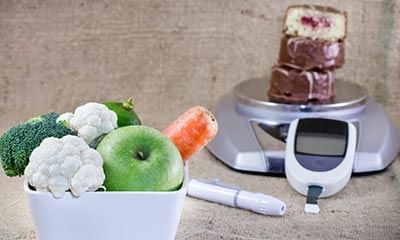Test and Devices for Diabetes Patient
Home management
Glucose (blood sugar) levels
Both low blood sugar (hypoglycemia) and high blood sugar (hyperglycemia) are of concern for patients who take insulin. It is important, therefore, to carefully monitor blood glucose levels. In general, patients with type 1 diabetes need to take readings four or more times a day. Patients should aim for the following measurements:
Pre-meal glucose levels of 90 - 130 mg/dl
Bedtime levels of 110 - 150 mg/dl
Different goals may be required for specific individuals, including pregnant women, very old and very young people, and those with accompanying serious medical conditions.
Finger-prick test. A typical blood sugar test includes the following:
A drop of blood is obtained by pricking the finger.
The blood is then applied to a chemically treated strip.
Monitors read and provide results.
Home monitors are about 10 - 15% less accurate than laboratory monitors, and many do not meet the standards of the american diabetes association. Most doctors believe, however, that they are accurate enough to indicate when blood sugar is too low.
To monitor the amount of glucose within the blood a person with diabetes should test their blood regularly. The procedure is quite simple and can often be done at home.
Some simple procedures may improve accuracy:
Testing the meter once a month.
Recalibrating it whenever a new packet of strips is used.
Using fresh strips; outdated strips may not provide accurate results.
Keeping the meter clean.
Periodically comparing the meter results with the results from a laboratory.
Supplementary monitoring devices. Other devices are available for monitoring blood glucose. These devices are used in addition to traditional fingerstick test kits, and glucose meters but do not replace them:
Continuous glucose monitoring systems (cgms) use a needle-like sensor inserted under the skin of the abdomen to monitor glucose levels every 5 minutes. In 2007, the sts-7 system was approved. Using a disposable sensor, the sts-7 measures glucose levels for up to a week. An alarm will sound if glucose levels are too high or low. The older minimed system measures glucose over a 72-hour period and has wireless communication between the monitor and an insulin pump.
Glucowatch is a battery-powered wristwatch-like device that measures glucose by sending tiny electric currents through the skin, a technique called reverse iontophoresis. It is painless and has a warning device when detecting high glucose levels. It takes 2 hours to warm up, and the sensor pads need to be changed every day. Glucowatch measures glucose levels three times per hour for up to 12 hours. About a quarter of the time, the results differ significantly from actual fingerstick tests, however.
Glycosylated hemoglobin
Hemoglobin a1c (also called hba1c, ha1c, or a1c) is measured periodically every 2 - 3 months, or at least twice a year, to determine the average blood-sugar level over the lifespan of the red blood cell. While fingerprick self-testing provides information on blood glucose for that day, the hba1c test shows how well blood sugar has been controlled over the period of several months. For most people with well-controlled diabetes, hba1c levels should be below 7%. Home tests are available for measuring a1c but they tend not to be as accurate as the laboratory tests ordered by doctors.
Urine tests
Urine tests are useful for detecting the presence of ketones. These tests should always be performed during illness or stressful situations, when diabetes is likely to go out of control. The patient should also undergo yearly urine tests for microalbuminuria (small amounts of protein in the urine), a risk factor for future kidney disease.


+1.svg)
